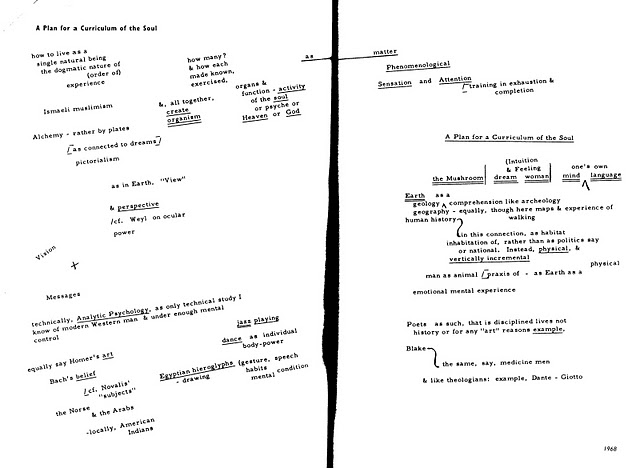Write 39 or more lines of
traditional formal poetry in your notebook or a Google Doc titled “Poetry in
Traditional Forms”.
Sestina
Length: 39 lines (six
six-line stanzas with a final stanza of three lines)
Rhyme scheme: none
Rhythm: varied
Other: Give a number to the
word that comes at the end of each line in the first stanza: 1 then 2 then 3
then 4 then 5 then 6. Then the words ending the second stanza's lines appear in
the order 615243. (In other words the line that ended the sixth line in the
first stanza now ends the first line in the second stanza, etc.) Then follow
this line ending patter: 364125, then 532614, then 451362, and finally 246531.
These six words then appear in the final tercet as well, with the tercet's
first line usually containing 1 and 2, its second 3 and 4, and its third 5 and
6.
Italian Sonnet (in
English)
Length: 14 lines
Rhyme scheme: ABBAABBA CDECDE
Meter (rhythm): iambic
pentameter
Other: volta
(shift) at line nine
English Sonnet
Length: 14 lines
Rhyme scheme ABAB CDCD EFEF
GG
Rhythm: iambic pentameter
Other: volta
at line nine, couplet provides closure or resolution or twist.
Ballad
Length: varies
Rhyme scheme: usually ABCB
Rhythm: four-beat line
followed by three-beat line, etc. (Beat=stressed syllable)
Other: ballads tell a story
Villanelle
Length: nineteen lines
Rhyme scheme: ABA ABA ABA ABA ABA ABAA
Rhythm: usually tetrameter or
pentameter
Other: The first and third
line in the first stanza are repeated in several places. The first line is
repeated at the end of the second and forth stanzas and in the third line of
the last stanza. The third line is repeated at the end of the third and fifth
stanzas and in the very last line of the poem. Here’s the scheme: A1bA2
abA1 abA2 abA1 abA2 abA1A2.
Limerick
Length: five lines
Rhyme scheme: AABBA
Rhythm:
anapestic (unstressed,
unstressed, stressed syllables: da, da, DUM)
or amphibrachic (unstressed,
stressed, unstressed syllables trimeter: da, DUM, da)
with three stressed syllables
in lines 1, 2, and 5; and
two stressed syllables in
lines 3 and 4.
Other: Limerick’s
are usually playful, often absurd.
Haiku
Length: three lines
Rhyme scheme: none
Rhythm: five syllable, seven
syllables, five syllables
Other: traditional haiku
refer to the seasons directly or indirectly (kigo), and include a “cutting word,” a break in the text (kireji).
Tanka is a variation with the following syllable pattern:
5-7-5-7-7.
Renga is linked “tanka” 5-7-5, 7-7; 5-7-5, 7-7; etc.;
finishing with an additional 7-7.
***
Create your own form (with at least three constraints) and write a poem (of fourteen or more lines) using that form. Write down the constrains so I know what they are.
Here are some other poetic forms and ideas about poetic form that might help you create your own form.
Acrostic variations:
end-acrostic, double acrostic, mesostic
Anaphora (repetition of line
or sentence beginnings), epistrophe (repetition of line or sentence endings):
Jack Kerouac’s book of blues: "In
my system, the form of blues choruses is limited by the small page of
the breastpocket notebook in which they are written, like the form of a
set number of bars in a jazz blues chorus, and so sometimes the
word-meaning can carry harmonically from one chorus into another, or
not, just like the phrase-meaning can carry harmonically from one chorus
to the other, or not, in jazz, so that, in these blues, as in jazz, the
form is determined by Time, and by the musicians spontaneous phrasing
& harmonizing with the beat of the time as it waves & waves on
by in measured choruses.
It’s all gotta be non stop ad libbing within each chorus, or the gig is shot."
Charles Olson’s projective verse & composition by field: think of each line as a unit of breath; treat the page like a musical score and/or artist’s
canvas. (Olson lived in Gloucester at 28 Fort Square.)
e.e. cummings's typographic experiments like this one which is about loneliness and embodies loneliness
Apollinaire's calligramme's: inventive word pictures
Oulipo Experiments:
N+7:
where each substantive or noun in a given text, such as a poem, is
systematically replaced by the noun to be found seven places away in a chosen
dictionary.
George
Perec’s La Disparition (A Void in
English): no words in the work include the letter “e”








No comments:
Post a Comment